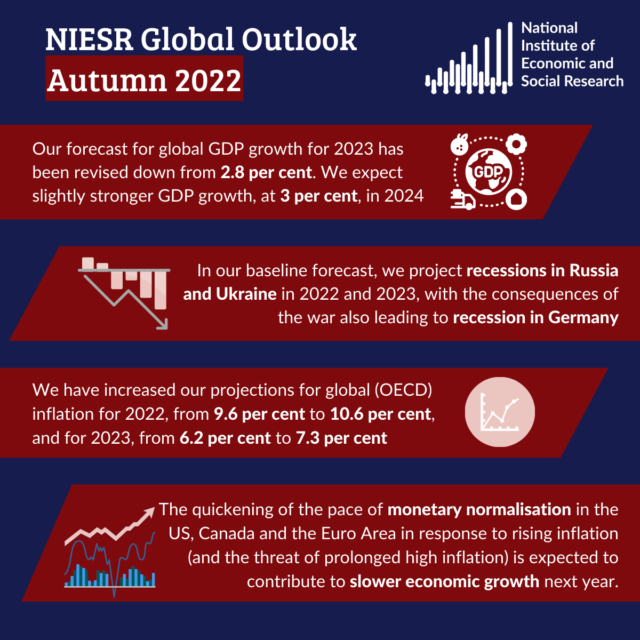The Deflationary Effects of Global Monetary Tightening
An increase in US interest rates has a significant international impact on both other advanced and emerging economies. The US dollar’s dominance in the international monetary system and its role as the world reserve currency make the implications of the Fed’s monetary policy more severe on emerging economies when compared to advanced economies. In this NiGEM Topical Feature, we use our NiGEM model to compare and contrast the deflationary effects of two forms of global tightening cycle.
Sign in to Access Pub. Date
Pub. Date
11 November, 2022
 Pub. Type
Pub. Type

Main points
- In the first, led by the United States, the Federal Reserve (Fed) starts to raise rates and the rest of the world follows when their exchange rates fall as a consequence. In this case the deflationary shock to world GDP is a little over 1 per cent.
- In the second, we posit a global shock to which all countries respond in concert. The overall deflationary effect here is much greater, at a little over 3 per cent.
- We think this exercise is instructive given that we see elements of both in the current global conjuncture with the Fed tightening in response to the high inflation caused partly by loose fiscal policy in the United States and other countries’ central banks tightening in response to the high inflation caused both by higher energy and food prices resulting from the war in Ukraine and the depreciations of their currencies against the dollar.

